2022 Week 1: Neighborhood/Community Organizing
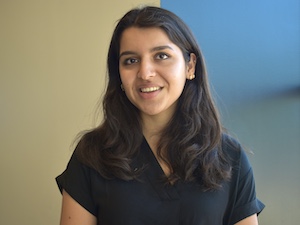 Aiman Altaf | 29th St Community Center
Aiman Altaf | 29th St Community Center
When I stepped in on Tuesday, my supervisor said “We have an event tonight, wanna help out with that or start on something else?” Being thrown into an event on my first day was probably the best introduction to the community center because I was able to see what the building meant to the community and I was exposed to the type of event organization that I will be helping out with this summer. The event was part of the Gertude S. Williams speaker series, and involved three journalists as panelists: an environmental journalist for the NPR, a founder of the Baltimore Banner who wrote “We Own the Night, and a publisher of the Baltimore Times. I helped set up the event, sat at the welcome desk and then listened to what the speakers had to say about the role of journalism (especially unbiased) in Baltimore and society at large. I found myself taking notes about everything the panelists were saying, not because I was going to be quizzed on it but because I genuinely wanted to record and later look back on their insights. I also immediately fell in love with the community center; it was less of the YMCA I had imagined, and more so a second home and gathering place for people in the community. This was also the day our website went live (so go check it out!).
The next day, I read a bunch of historical documents about 29SCC to understand its journey and purpose better. I learned how just last year it became an independent nonprofit,and I also read through survey responses from community members including things they wanted to see from the community center. A few months ago, one of my main goals for the summer had been to develop a nutrition education program for the kids at the 29SCC summer camp. But after orientation, interacting with the community, and reading the historical documents about 29SCC, I realized how out of touch I had been with the needs of the community. I decided to change my idea to a “wellness table” instead. This table will hopefully be at each of the weekly events that are part of the summer community connect series (a health and wellness series) being organized by 7 partner organizations in Baltimore. The goal of the table is not so much to educate, as it is to prompt people to think about how they can implement healthier changes in their own lives in a sustainable way. I promised myself that I would talk to other sources to make sure that my table was well researched and fit the community needs, and that it isn’t centered around what I want or what I am interested in, but what will actually serve the community. In that direction, I have already set up three meetings with people to further discuss how my table can serve its purpose. I have been surprised by how long it takes to plan something so small, and how the whole process in short is more like “discuss ideas, revise a bunch, work on it, repeat”.
The rest of the week was spent sitting in on my supervisor’s meetings (marketing, finance, summer event series, and more), and I realized just how many different roles she has to fill with such a short-staffed community center. I am really excited to learn more about how the nonprofit works, to continue working on the wellness table, and to get to know the community better!
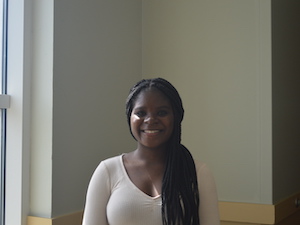 Mimi Avril | Central Baltimore Partnership
Mimi Avril | Central Baltimore Partnership
This week I had to the opportunity to help my organization plan the Community Connected Series: a series of events held at different community recreation centers to provide free food, exercise classes, and to promote healthy lifestyles as an effort to combat food inaccess and to occupy community open spaces. I visited the Cecil Kirk Recreation center with the program directors and I was excited to begin to see how they would use the green space behind to hold the first event.
Later that day, I visited a resident’s home with my supervisor. She and her finance invited us inside and we sat down to talk about the issues plaguing her neighborhood. She told about the main she issue she had called for, garbage dumping and littering in the neighborhood. But she continued to talk, she began to tell us about the gang violence plaguing her area and of the recent shootings taken place. As she was a new resident of the area, my supervisor began to explain to her the history of gang violence at this area. He told her this area lies between the between the intersection of multiple police jurisdictions and does not specifically belong to one. Therefore, it’s an area prone to gang activity and recruitment. He also told her what corridors have heavy gang traffic and are not crossed by residents. While he was educating her, a resident, he was also educating me, a transplant and a Hopkins student, completely removed from this reality.
On that same day, we visited another recreation near the resident’s home.The recreation creation center is near a corridor and is known as a spot where young boys, about ages 12 and 13, are recruited for gangs before they age of out the center. But after finding out there was new management, my supervisors were excited for change and began to see how they could implement some of our events at the center for that specific neighborhood.
I’m thinking of what it means for that community to be engulfed by violence born out of deep systematic issues, or what it means for those young boys to be given no alternatives and placed on the path to gang life. Although this day weighs heavy on my heart, I know if I ever want to make an impact on the Baltimore community, no matter how small, I have to learn its wounds.
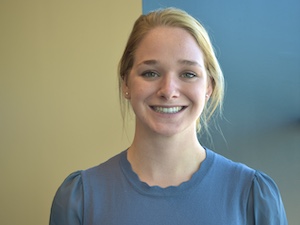 Kate Overbey | Greenmount East Leadership Project
Kate Overbey | Greenmount East Leadership Project
Greenmount East Leadership Project is a new, growing nonprofit that aims to provide young adults with life skills they don’t gain within the Baltimore public school system. Isaiah Johnson, my supervisor, and I are the only members of Greenmount East Leadership Project, but we partner with YouthWorks, a program that compensates 14- to 21-year-olds to attend summer programs focused on personal and professional development.
This week, Isaiah and I focused on both the immediate and long-term future of GELP. The goal of Greenmount East Leadership Project is to not only positively affect the young adults we have this summer but to build a program that can bleed into the Baltimore City School system and continue affecting middle and high schoolers beyond the scope or reach of our particular program limits. To do so, Greenmount East Leadership project needs a solid foundation, a curriculum, community partners, and excitement about the program both from the community and from us ¬— passion and stability.
The first is abundant. This week I saw Isaiah interact with every community member he saw on the street outside our office. He stopped and talked to everyone, and nearly everyone stopped and did the same. Isaiah wholeheartedly believes in this program, and it’s clear from those we spoke to that other community members feel the same.
The following weeks before the program begins will be focused on the second — stability. Because Greenmount East Leadership Project is a relatively new nonprofit, we have space to expand into a variety of important life skills such as first aid, computer literacy, financial literacy, healthy communication, and leadership tactics. In the next few weeks, we aim to solidify the workshop leaders, write up a monthly and weekly schedule, and prepare to run a successful, fun, and informative summer program.
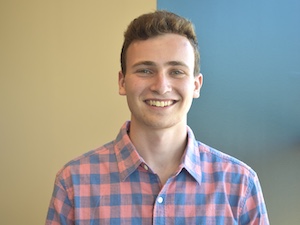 Will Polen | Neighborhood Design Center
Will Polen | Neighborhood Design Center
My first week at the Neighborhood Design Center felt like a solid introduction to the organization. I spent much of the week onboarding — setting up my email and Google Drive, meeting staff, and reading up on our community projects — and was eager to pick up ‘menial’ tasks that could introduce me to the operations of NDC. Especially as work ramps up before the end of the fiscal year on July 1st, I felt happy playing a small role in taking the stress off of my new co-workers. Though I don’t hope to transcribe documents for eight straight weeks, I think picking up tasks like that really helped me learn by doing.
Since I didn’t drive any big initiatives of my own, much of the lessons from my first week came from shadowing my supervisor in meetings and site visits. The most impactful one was a quick trip to Cecil Elementary School, where my supervisor met with MDOT to hopefully get funding for a project that’d make intersections around the school safer. Throughout the visit, cars sped through red lights and rolled at stop signs. Just a year out from a car hitting a Kindergartener after school, this project felt direly necessary. With proper funding, the Neighborhood Design Center would be able to fix these intersections within 12 months. I idealistically figured that MDOT would end the site visit by forking over the federal fund it was holding onto.
Then bureaucracy hit. Almost apathetically (though I’m sure I was being cynical), MDOT said that by law it couldn’t fund any traffic-calming initiatives without first making the intersections ADA compliant. Tearing up sidewalks and replacing them with ADA compliant ones, while of great importance, is a project that can take up to 7 years start-to-finish… much greater than our original one year timeframe. It appeared that the project had been all but nixed on the spot.
As I later learned, the vast majority of Baltimore’s urban planning isn’t ADA compliant. As a city, it’s never had the proper funding to invest in ADA compliance projects — even as other comparable cities have updated their infrastructure. As such, federal money (which mandates that all its projects are ADA compliant) often skips over our city and into the hands of others.
This opened my eyes to the vicious cycle of systematic disinvestment. Because Baltimore has been historically inadequately funded, it’s never been able to update its infrastructure to comply with ADA standards. As such, generous federal infrastructure funding rarely goes to Baltimore — even though the city needs it. In the case of Cecil Elementary, this means that little kids are subject to dangerous intersections everyday.
Hopefully, the Cecil Elementary delay can soon be resolved. But for now, it serves as a humbling reminder that community engagement work is saddled with bureaucracy and setback — it’s not easy.
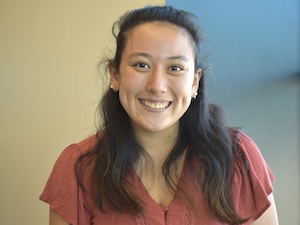 Cecilia Ramirez | Historic East Baltimore Community Action Coalition
Cecilia Ramirez | Historic East Baltimore Community Action Coalition
Week 1 DONE!
Looking back at this first week, it feels like I have been at my partner for a lifetime but also no time at all. It has been wonderful jumping straight into work, but also getting to know the different people who work with my placement. One of the many highlights was definitely the small chats I had in the hallway, laughing and getting to know the people that I will get to work with this summer. Getting used to the 9-5 work life and the commute has been an experience, but I feel like the adjustment has been smooth and enjoyable.
One thing that I had noticed is just how excited my coworkers were to share their ideas and to have an extra set of hands on deck. There are so many ideas and goals and such limited time and resources, but it’s exciting to be in a place where there is so much that is to be done and this energy to get things done. That being said, it has set in that oftentimes, a lot of ideas and work cant be done because there’s so much to be done and not enough resources/manpower to do so. I’m happy to be an extra set of hands, but also to be an extra set of ears to hear them, which I think is sometimes just as important.
I think something that challenged me this week was more independence than what I may have been used to in my previous jobs. I have been given a list of tasks to be done, but also given some more leeway in getting to make decisions on my own. I think my initial instinct is to constantly check in and make sure I am doing everything correctly, but am learning to balance checking in with doing my work. I think the biggest thing in navigating this is having communication with my supervisor and coworkers, and adjusting, really making it a learning experience.
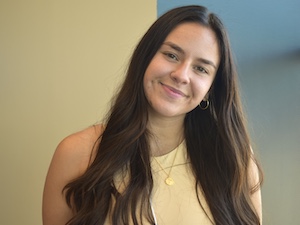 Laís Santoro | Pro Bono Resource Center
Laís Santoro | Pro Bono Resource Center
This was my first week working with PBRC, and it would have been absolutely fabulous had I not gotten COVID the weekend before starting 🙁 I would have been able to see the office in person and also attend two clinics, diving right in to estate planning and foreclosure just this week alone. Instead, I stayed home and found many other ways to stay busy. I would have to say something I did that definitely impacted me a bit and highlighted just the wide range of issues that PBRC covers was on my first day, when I completed the introductory tasks that my supervisor shared with me. This involved reading the Annual Reports from both 2020 and 2021 and watching the Impact Speaker Series that my supervisor actually coordinated and hosted from last summer! There were 5 parts to the series and each one highlighted the main projects that PBRC coordinates and advocates for- eviction prevention, tax sale (when we had to worry about tax sale in the spring), utility bills (which they don’t work on anymore so I didn’t have to watch that one but probably will at some point), unaccompanied minors, and estate planning. I didn’t know what tax sale or estate planning really entailed before this week, and my supervisor did a really great job explaining it and answering all my questions when we checked in. Essentially, the tax sale system occurs once a year and when a homeowner fails to pay their property tax and it exceeds $750 in value, the home can then go to tax sale. This is where they auction off the rights to foreclose on the home to a third party that will pay the debt owed from the property tax, so essentially the lien for the property against the homeowners. There is a huge disparity when homeowners don’t know about this and don’t have things like internet access to know that tax sale is a thing/ that they are impacted by it, let alone what happen if their home is sold off at the auction (not the actual home but the rights to do whatever the third party buyer wants to do with it basically). PBRC has a major role in this in educating homeowners about it, providing legal assistance even after the tax sale has occurred and hopefully allowing the homeowner to keep their home. Especially with COVID, many people have had to choose between what bills get paid if they had lost their job or eanred less pay with less hours due to cuts. Mayor Scott has tried to make it easier on homeowners by delaying it or putting a lot of effort into informing people about it, but it’s still an issue.
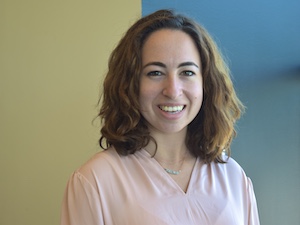 Lily Sheth | Neighborhood Housing Services of Baltimore
Lily Sheth | Neighborhood Housing Services of Baltimore
This week, my supervisor and I worked to distribute information about NHS’ foreclosure prevention counseling services to the residents of Mosher, Robert W. Coleman, and Midtown-Edmonson neighborhoods. NHS used Baltimore City tax sale data to compile a map of homes that are at risk of being foreclosed. Due to a limited number of brochures, I created a list of addresses to visit based on 4 different neighborhood “hot spots”- blocks where there is a high volume of homes on the tax sale list.
With clipboards in one hand, brochures in the other, and sweating through our blue NHS polos in the hot Baltimore sun, my supervisor and I set out to begin this work Tuesday afternoon. As we pulled onto the first block we were supposed to hit, it became shockingly clear that we were too late for the homes on our list. Almost every home we had identified on the map was vacant– city notices and an auction sale sign slapped across the piece of plywood blocking the front door. In some cases, the rowhome had been completely razed, with a small plot of grassy land representing what was once someone’s home. In fact, on many of the blocks we visited Tuesday, Wednesday, and Thursday, there were more vacant homes than occupied homes.
Realizing our data was outdated, my supervisor and I changed our game plan. Instead of working off our list, we went door to door in the blocks around the “hotspots”, and if the home seemed to be inhabited, we left our flyer at the residence. On many streets, there were neighbors sitting outside on their porches, curious about what two white women in blue polos were doing on their block. Talking to these residents allowed us to spread the word about the other services NHS provides as well, such as financial coaching, down payment assistance, and rehab loans. Folks were generally surprised to hear about the breadth of NHS’ work in the area and genuinely seemed like they were going to follow-up with our organization.
On Wednesday morning, I received a call from one of the women I had spoken to in the Robert W. Coleman neighborhood. She is 83 years old and has been in her house for 40 years. She reached out to me to have me fill out a HUBS application for her, a program through the city that provides grants to qualified seniors in need of major home repairs. My client’s roof needs some repairs, and her entire home needs to be made more accessible, as she struggles with arthritis. She shared that she had tried to get support from city resources for seniors on her own before, but they never got back to her about her application, and she has been living in the same poor conditions. She also told me she struggles to find out about resources because she is older and not technology savvy enough to navigate the various online portals required to submit the applications.
I am grateful to my supervisor and NHS for introducing me to the neighborhoods the organization serves within the first week of my summer with them. Looking at maps and reading about redlining, disinvestment, and white flight is one thing. However, I learned more about these pressing social issues in one afternoon walking down a block that has more vacant than occupied homes and speaking to concerned residents than I ever did in the classroom. I hope to continue to spend time in these areas and talk to the neighbors throughout my internship because they are the true experts when it comes to housing in this city.
